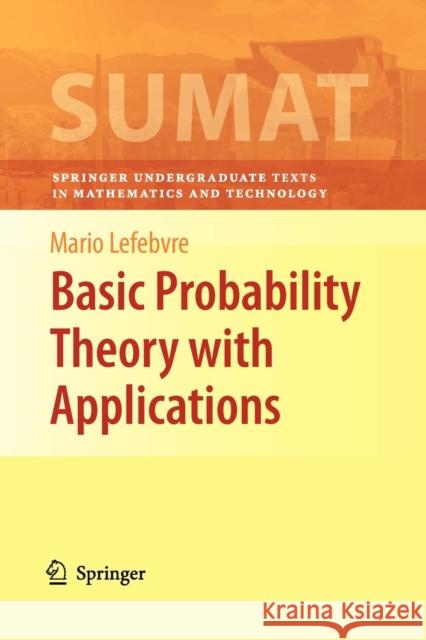Basic Probability Theory with Applications » książka
Basic Probability Theory with Applications
ISBN-13: 9781461429234 / Angielski / Miękka / 2012 / 340 str.
Basic Probability Theory with Applications
ISBN-13: 9781461429234 / Angielski / Miękka / 2012 / 340 str.
(netto: 192,11 VAT: 5%)
Najniższa cena z 30 dni: 192,74 zł
ok. 22 dni roboczych
Bez gwarancji dostawy przed świętami
Darmowa dostawa!
The main intended audience for this book is undergraduate students in pure and applied sciences, especially those in engineering. Chapters 2 to 4 cover the probability theory they generally need in their training. Although the treatment of the subject is surely su?cient for non-mathematicians, I intentionally avoided getting too much into detail. For instance, topics such as mixed type random variables and the Dirac delta function are only brie?y mentioned. Courses on probability theory are often considered di?cult. However, after having taught this subject for many years, I have come to the conclusion that one of the biggest problems that the students face when they try to learn probability theory, particularly nowadays, is their de?ciencies in basic di?erential and integral calculus. Integration by parts, for example, is often already forgotten by the students when they take a course on probability. For this reason, I have decided to write a chapter reviewing the basic elements of di?erential calculus. Even though this chapter might not be covered in class, the students can refer to it when needed. In this chapter, an e?ort was made to give the readers a good idea of the use in probability theory of the concepts they should already know. Chapter 2 presents the main results of what is known as elementary probability, including Bayes rule and elements of combinatorial analysis."
This book presents elementary probability theory with interesting and well-chosen applications that illustrate the theory. An introductory chapter reviews the basic elements of differential calculus which are used in the material to follow. The theory is presented systematically, beginning with the main results in elementary probability theory. This is followed by material on random variables. Random vectors, including the all important central limit theorem, are treated next. The last three chapters concentrate on applications of this theory in the areas of reliability theory, basic queuing models, and time series. Examples are elegantly woven into the text and over 400 exercises reinforce the material and provide students with ample practice.§This textbook can be used by undergraduate students in pure and applied sciences such as mathematics, engineering, computer science, finance and economics.§A separate solutions manual is available to instructors who adopt the text for their course.











